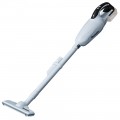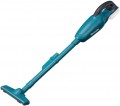Suction power
The suction power provided by the vacuum cleaner. For models with power adjustment (see below), in this case, the maximum value is taken into account. Note that "suction power" is sometimes erroneously also called the suction force, indicated in pascals; see below for more details.
Suction power is a key indicator that determines the capabilities of the unit: the higher it is, the more efficiently the vacuum cleaner can draw in various contaminants, and the better it handles with carpets, fabrics and other materials into which dust can penetrate deeply. On the other hand, high power inevitably affects the weight, power consumption, dimensions and price of the device. Therefore, it does not always make sense to chase the maximum values — you need to take into account the real working conditions and the general purpose of the vacuum cleaner.
The specific numbers found in this paragraph largely depend on the type of device. For example, in handheld household models, suction power
does not exceed 100 W,
and for conventional household units, an indicator of 100 – 150 W is still considered very limited. At the same time, we note that the minimum required for a full-fledged dry cleaning of smooth floors is considered to be
300 – 350 W,
for carpet and other short pile coatings — 350 – 400 W, and for long pile materials and upholstered furniture
higher rates are desirable. Vacuum cleaners with lower suction power values are intended not so much for periodic cleaning, but for constant (ideally daily) maintenance of cleanliness in an already tidy room.
As for the relationship between suction power and suction force, it is as follows: power is the suction force (thrust) multiplied by the airflow (performance). Without going into too much detail, we can say that the efficiency of the vacuum cleaner is determined by both of these indicators. And it is worth evaluating this efficiency by suction power (regardless of the specific relationship between traction and performance).
Power adjustment
The type of power regulator provided in the design of the vacuum cleaner.
By itself
, power adjustment allows you to adjust the operating mode to the current situation. For example, to clean a thick carpet, it is better to use a vacuum cleaner on full power, and on a delicate sofa or chair, it may be better to reduce the power. Types of power regulators are distinguished by location; options can be as follows:
— On body. The most popular option among modern vacuum cleaners. The main advantage of models with this design is that they do not require special hoses (unlike the units described below with adjustments on the handle). However, installation on the body is not very convenient for conventional vacuum cleaners (see "Type") — to change the power, you have to lean towards the body every time. However, for most users, it is not critical.
— On handle.
The power regulator on the handle of the vacuum hose is convenient because the control is right at your fingertips, and you can change the power with just one movement of your finger, without bending over to the body. However, this convenience has a downside. So, some of these vacuum cleaners can only be fully used with special hoses; when installing a classic hose (without a regulator), the device, at best, will only work at full power, without adjustment, at worst, it will not turn on at all. A special hose is usually included
...in the kit, but finding a replacement for it can be a quite troublesome (and costly) business. In other models, a wireless remote control is used, and its presence significantly affects the price of the unit.
— On body and handle. Vacuum cleaners combine both of the options described above. Usually, a hose with a regulator on the handle is supplied with such a unit. However, if necessary, you can install a regular hose and change the power with a switch on the body. Such control is the most versatile. Nevertheless, it is more expensive than each of the options described above.Compatible batteries
Battery models compatible with the vacuum cleaner. This information will be useful in cases where the batteries must be purchased separately, for example, if the tool does not come with a battery in the kit, if you need to supplement the original kit, or if the existing battery has failed.
Battery run time
The operating time of a battery-powered vacuum cleaner (see "Power supply") on a single battery charge.
Usually, the average operating time in normal mode is indicated here. Accordingly, in fact, the battery life of the vacuum cleaner may differ slightly from the claimed one, depending on the chosen application format. Nevertheless, the operating time indicated in the specifications is a fairly reliable indicator; it can be used both for a general assessment of battery life and for comparing the selected vacuum cleaner with other models.
Separately, we note that increasing battery life requires either the use of more capacious (and therefore more expensive and heavier) batteries or a decrease in engine power (and the efficiency of the unit as a whole). So it is worth looking specifically for a long working vacuum cleaner if these moments are outweighed by a long operating time.
LED lighting
The presence of
light-emitting diode (LED) lighting in the design of the vacuum cleaner.
Such lighting is placed on the working nozzle or close to it and illuminates the area being processed by the vacuum cleaner. Its main purpose is to provide convenience when working in dark places, such as under sofas/beds, dark corners, etc. At the same time, the lighting can be useful in normal brightness lighting: it well reveals dust and debris on smooth surfaces like linoleum or laminate.
As for the LED lighting vacuum cleaners themselves, most of them belong to one or another type of upright ones (see "Type") — it is in such units that this function is technically easiest to implement. It is also found in some conventional and handheld household vacuum cleaners. However, there are a few such models on the market, and they are not cheap due to additional design features. For example, in a conventional vacuum cleaner, for the lighting to work, not only a tube is required, but also a hose of a special design — with wiring to supply power to the LEDs.

